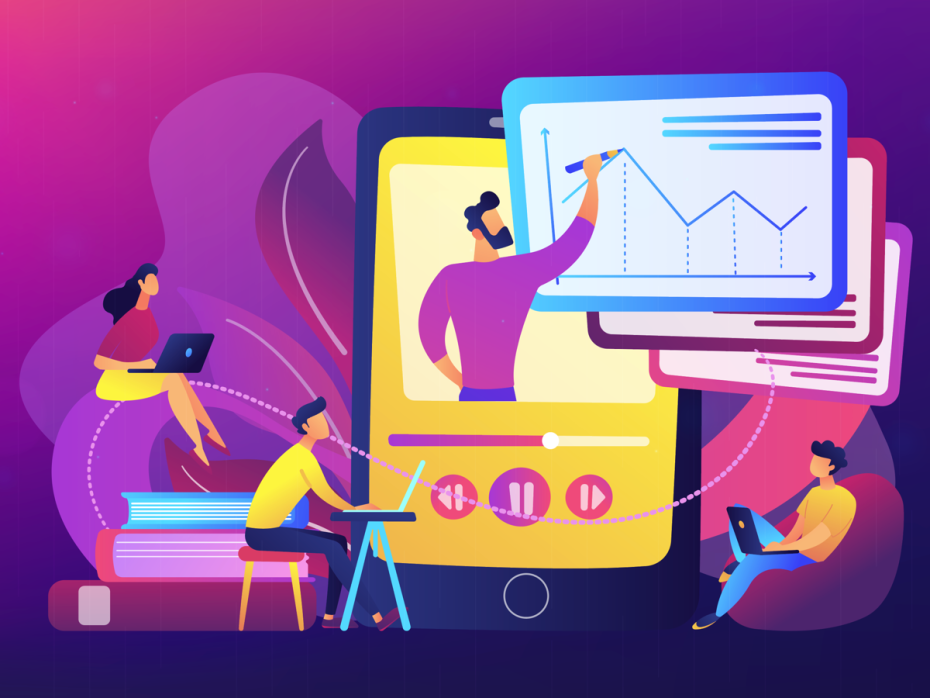When choosing online tools, you need to think carefully about which levels of learning you are trying to address: habits, constructs or abstractions.
Learning new habits involves repetition and reinforcement; learning new constructs involves connecting existing knowledge with new information; and learning new abstractions involves reconceptualising existing understanding to develop new perspectives.
Within higher education, levels of acquired knowledge among learners are high. Most of the teacher’s role, therefore, tends to be about structuring learning to best transmit constructs and abstractions, enabling learners to understand new information in the context of what they already know.
Selecting online tools that help learners build on their existing knowledge will improve the personalisation of your teaching, especially given the challenges in motivation and visibility of learning that can exist in predominantly or entirely online delivery.
Tools to consider
-
Mind-mapping tools (such as XMind or Visio) provide a useful method both to convey your mental models to learners and to enable learners to convey theirs to each other and to you.
-
Video recording and editing software (such OBS Studio and DaVinci Resolve) can provide an effective way for you to convey a combination of concepts online. You could, for example, combine a video recording of yourself talking with a presentation; or capture demonstrations on screen and discuss these; or include a video within a video to narrate or critique. You can then combine different pieces of learning content together to make it cohesive. Learners could, in turn, do the same as part of their coursework.
-
Collaborative tools (such as Microsoft Teams or Span Workspace) provide options such as file sharing, project planning, notetaking, post-it boards and interactive wikis. These make group work easier to organise, more engaging and rewarding, and support developing rich digital content.
-
Collaborative tools also provide simple interactive components such as surveys, quizzes and polls that make tracking learning progress easier both for teachers and learners, and enable the repetition and reinforcement required to develop new learning habits. These can then be combined with the higher-level tasks expected within higher education.
-
Virtual learning environments also provide many of these opportunities, hence their remaining popular within higher education.
Promoting self-regulated learning
Self-regulated learning, while historically central to the learning process, is even more important in remote and online learning environments.
In self-regulated learning, students’ regulation is based on how they perceive current requirements in the context of what they have done previously. So, how students have reviewed previous learning has a direct impact on how they perceive current learning. This in turn affects how they plan and perform in future learning.
The key to effective self-regulated learning, therefore, is to focus on virtuous improvement cycles, incremental gains in learning and achievement through which students gain mastery. As students make these gains, their motivation increases and they persist.
Promoting self-regulated learning can involve a wide range of online tools to meet different learner needs but often simplicity is key as we seek to minimise learning barriers and maximise engagement.
A good starting point for improving persistence and positive achievement is to reflect on and reconceptualise previous unhelpful experiences. This is something students may not wish to share with the public or fellow students, but where the teacher can guide learners in more positive ways of viewing past experiences.
When it comes to planning learning tasks and setting learning goals, project management software (for example, Basecamp and Trello) can be useful, especially for complex tasks such as dissertations and group work.
However, a more important consideration is how to make better learning choices. How long should we spend planning versus implementing? Reflecting versus reporting? How well did we perform in the task that was asked of us? Understanding the impact of learning choices on performance, through monitoring, is a critical self-regulated-learning skill.
Finding the right information to analyse, monitor and review learning choices may be as simple as undertaking a literature search to analyse and understand existing perspectives or monitoring performance through a reflective progress log. Feedback from online focus group meetings and data collection from simple questionnaire software (such as SurveyMonkey) or analysis packages (such as SPSS) can also inform more objective performance reviews.
Transparency and tracking
While helping learners make informed planning choices, perhaps the most valuable intervention you can make is simply to share as much learning information with the learner as possible.
The better you structure your course to enable this, the more you will empower the learner to self-regulate their learning and take control over their learning performance. By breaking assessments down into component parts and setting checkpoints to indicate expected progress rates, you enable the learner to plan more effectively. By building in feedback points, ensuring learners reflect as they progress and seek guidance, you enable them to become better learners.
You will also be better informed on their learning progress and better able to make effective and timely learning interventions. These structural changes can usually be easily built into virtual learning, with surveys, quizzes and polls providing easy ways to test progress regularly alongside more traditional assessment submissions.
If learners know they are making good progress they will make further progress. Learning analytics, either institutionally or locally generated, can therefore also play an important role in the efficacy of learning when using online tools, just as sports tracking devices help drive sporting performance improvements.
Again though, where possible, keep things simple and effective. Make learning fun and engaging using online tools such as those outlined above to blend elements of competition, collaboration, personalisation and introspection. Learners should learn as much as possible about themselves within the learning process; by better understanding their own learning progress they can improve their future learning performance.
Rupert Ward is a professor of learning innovation (associate dean, international) in the School of Computing and Engineering at the University of Huddersfield.




comment